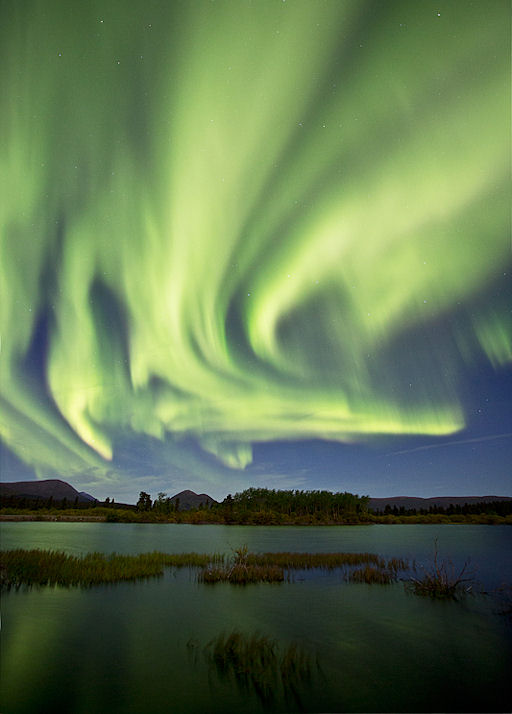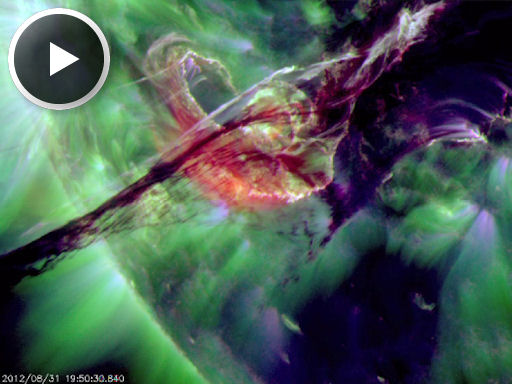They came from outer space--and you can have one! Genuine meteorites are now on sale in the Space Weather Store. | | | SUBSIDING STORM: A geomagnetic storm that began on Sept. 3rd when a coronal mass ejection (CME) hit Earth's magnetic field is subsiding now. The impact at 1200 UT induced significant ground currents in the soil of northern Scandinavia and sparked bright auroras around the Arctic Circle. Jonathan Tucker photographed the display over Whitehorse in the Yukon Territories of Canada: 
"I'm glad Its getting dark again in the land of the midnight sun," says Tucker. "These were my first auroras of the year here in the Yukon." Stay tuned to the aurora gallery for photos of the ongoing geomagnetic storm. Aurora alerts: text, phone. Realtime Aurora Photo Gallery MAGNIFICENT ERUPTION: A filament of magnetism curling around the sun's southeastern limb erupted on August 31st, producing a coronal mass ejection (CME), a C8-class solar flare, and one of the most beautiful movies ever recorded by NASA's Solar Dynamics Observatory: 
The explosion hurled a CME away from the sun traveling faster than 500 km/s (1.1 million mph). The cloud, shown here, is not heading directly toward Earth, but it will deliver a glancing blow to our planet's magnetic field. NOAA forecasters estimate a 40% chance of strong polar geomagnetic storms when the cloud arrives on Sept. 3rd. Realtime Space Weather Photo Gallery
Realtime Noctilucent Cloud Photo Gallery
[previous years: 2003, 2004, 2005, 2006, 2007, 2008, 2009, 2011] Potentially Hazardous Asteroids ( PHAs) are space rocks larger than approximately 100m that can come closer to Earth than 0.05 AU. None of the known PHAs is on a collision course with our planet, although astronomers are finding new ones all the time. On September 3, 2012 there were 1329 potentially hazardous asteroids. Notes: LD means "Lunar Distance." 1 LD = 384,401 km, the distance between Earth and the Moon. 1 LD also equals 0.00256 AU. MAG is the visual magnitude of the asteroid on the date of closest approach. | | The official U.S. government space weather bureau | | | The first place to look for information about sundogs, pillars, rainbows and related phenomena. | | | Researchers call it a "Hubble for the sun." SDO is the most advanced solar observatory ever. | | | 3D views of the sun from NASA's Solar and Terrestrial Relations Observatory | | | Realtime and archival images of the Sun from SOHO. | | | from the NOAA Space Environment Center | | | the underlying science of space weather | | 
